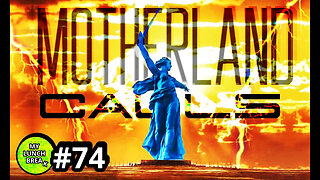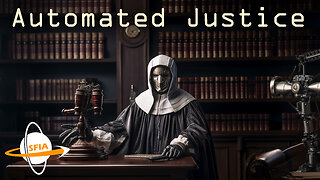Manipulating the Masses: The CIA's Influence on Media and Public Opinion
According to the documentary, former CIA employees and other individuals who have written about the agency explain that the CIA has been actively involved in manipulating the mass media to influence public opinion. The extent of this involvement is described as significant, with the CIA using various tactics to influence news reporting, shape public opinion, and control the narrative of events.
Some of the tactics described in the documentary include the use of propaganda and disinformation campaigns, as well as the placement of CIA operatives within major media outlets. These operatives are said to have worked as journalists, editors, and news producers, and their role was to ensure that the CIA's agenda was being advanced through the news stories that were being reported.
Former CIA agents, such as John Stockwell, are said to have been directly involved in these covert actions and provide detailed accounts of their experiences. They describe how the agency would provide false information to journalists or plant stories that would shape public opinion in a way that was favorable to the agency's interests.
The documentary suggests that this manipulation of the media is not limited to specific incidents but is a general practice of the American government, particularly in the Reagan Administration, to lie, distort information, and manipulate the press. It concludes by highlighting several instances of disinformation campaigns and comparing them with the overall practice of the US government.
Operation Mockingbird was a covert operation conducted by the Central Intelligence Agency (CIA) in the 1950s and 1960s with the aim of manipulating the media to spread propaganda and disinformation in support of the agency's objectives. The operation was initially started as a means of countering Soviet propaganda during the Cold War but was later expanded to include influencing domestic media outlets as well.
Under Operation Mockingbird, the CIA recruited journalists, editors, and other media professionals to serve as informants or agents of the agency. These individuals were paid to provide intelligence to the CIA and to disseminate propaganda in their news reporting. In some cases, the CIA even provided funding to media outlets to ensure that they would support the agency's objectives.
The operation was a significant violation of journalistic ethics and the principle of a free press, as it compromised the integrity of the news media and undermined the public's trust in journalism. It was eventually exposed through investigations by Congress and the media, leading to reforms aimed at preventing such covert activities in the future.
Although the CIA officially ended Operation Mockingbird in the 1970s, there are ongoing concerns about the agency's influence on the media and its potential impact on freedom of the press and democratic governance.
The Angolan CIA operation was a covert operation conducted by the Central Intelligence Agency (CIA) during the 1970s and 1980s in Angola, a country in southern Africa. The operation was part of the larger Cold War strategy of the United States to contain the spread of communism and promote pro-Western governments in Africa.
The operation began in 1975, when Angola gained its independence from Portugal and a civil war broke out between three main factions: the Marxist-Leninist People's Movement for the Liberation of Angola (MPLA), the National Union for the Total Independence of Angola (UNITA), and the National Liberation Front of Angola (FNLA). The MPLA received support from the Soviet Union and Cuba, while UNITA and FNLA were supported by the United States and South Africa.
The CIA operation in Angola involved a range of activities, including the recruitment and training of UNITA and FNLA fighters, the provision of weapons and other military supplies, and the coordination of military operations against the MPLA. The operation was also involved in propaganda and disinformation campaigns aimed at discrediting the MPLA and promoting the interests of the pro-Western factions.
The operation was controversial and highly criticized, both for its role in prolonging the civil war and for its disregard for the sovereignty of Angola. The operation was eventually exposed in the 1980s, leading to a public outcry and calls for greater transparency and accountability in the activities of the CIA and other intelligence agencies. The legacy of the Angolan CIA operation continues to be a subject of debate and controversy in US foreign policy and intelligence circles.
The "October Surprise" refers to a conspiracy theory that alleges that individuals associated with the Reagan campaign made a secret deal with Iran to delay the release of American hostages until after the 1980 US presidential election in order to prevent President Jimmy Carter from winning re-election.
While there is no concrete evidence to support the theory, some believe that members of the Reagan campaign, including future CIA director William Casey, may have been involved in secret negotiations with Iranian officials during the campaign.
According to some accounts, the Reagan campaign may have promised to sell weapons to Iran in exchange for its assistance in delaying the release of the hostages. The weapons sales were later revealed to have taken place during the Iran-Contra affair, which occurred during Reagan's second term in office.
At various times, under its own initiative or in accordance with directives from the President of the United States or the National Security Council staff, the Central Intelligence Agency (CIA) has attempted to influence public opinion both in the United States and abroad.[1]
Subsidies of non-government groups
In 1947, the Soviet-dominated Cominform (Communist Information Bureau) was created by Joseph Stalin. The conference, at which it was created, was a response of Eastern European countries to invitations to attend the July 1947 Paris Conference on the Marshall Plan. Cominform's stated purpose was to coordinate the work of Communist parties, under Soviet direction, so the Soviet leader Joseph Stalin called the conference in response to divergences among the eastern European governments on whether or not to attend the Paris Conference on Marshall Aid in July 1947.
The initial seat of the Cominform was located in Belgrade (then the capital of the Socialist Federal Republic of Yugoslavia). After the expulsion of Yugoslavia from the group in June 1948, the seat was moved to Bucharest, Romania. The expulsion of Yugoslavia from the Cominform for Titoism marked the beginning of the Informbiro period in that nation's history.
The intended purpose of the Cominform was to coordinate actions between Communist parties, and scores of Communist-controlled professional, artistic and intellectual groups under Soviet direction. The Kremlin had set up the Cominform in the early years of the cold war to coordinate the activities of the Cominform acted as a tool of Soviet foreign policy and Stalinism.[2]
In response, CIA psychological operators decided that the Cominform-controlled groups could best be countered by Western groups, including not only intensely anti-Communist right-wing groups, but groups across the ideological spectrum. Many of them were unaware of CIA subsidy, or such knowledge was restricted to a few leaders, and thus these groups were not expected to follow orders. Wilford cited, as examples, the small magazines Partisan Review and The New Leader, which received CIA funds in one way or another, but owed nothing to the agency, either in their founding or in their operations, and were not "front" organizations.[3] Other groups formed by the CIA, however, were true fronts, although some of the individuals being sponsored were unaware of the source of funds.
Philip Agee suggested that funding from the CIA to the National Student Association, which had been formed in 1947, may have begun in 1950. Tom Braden, head of the CIA International Organizations Division, does not disclose what year this funding began;[4] but it clearly began in the 1950s and continued until 1967. Braden said that the Division was established in 1950, when Director of Central Intelligence Allen W. Dulles overruled Frank Wisner, who headed the quasi-autonomous Office of Policy Coordination (OPC). Until 1952, OPC was the covert action branch of the U.S. government, loosely part of CIA but also with direct access and appeal to the Secretaries of Defense and State.[4]
1950 also marked the beginning of the ten-year Crusade for Freedom, an operation to generate American support for Radio Free Europe that was covertly backed by the CIA.
Another organization set up on 26 June 1950,[5] as the cultural arm of the International Organizations Division, was the Congress for Cultural Freedom.
In 1967, a number of clandestine subsidies to associations and journals became public. Given the CIA's prohibition from domestic activities, support of US groups with worldwide presence, such as the National Student Association, were especially problematic.[6] The exposure, by Ramparts magazine, of CIA subsidies to the National Association, according to Time, led to the term "orphans", referring to nearly 100 private agencies that had been getting CIA money, and were affected by a Presidential order that support must end by the end of 1967. Time succinctly summarized the issue with "the question is whether, in a free society, it is right, wise—or necessary—for supposedly independent organizations to receive secret subsidies."[6]
Whatever the merits or demerits of the CIA's methods, most of these groups served the U.S. well in its contest for the faith and understanding of the world's workers and thinkers, students and teachers, refugees from yesterday and leaders of tomorrow. This led to the appointment of a presidential commission, headed by Under Secretary of State Nicholas Katzenbach, to figure out how the gap left by the CIA should be filled. ... a politically ambitious former California newspaper publisher who served with the CIA between 1950 and 1954, added further details. In an article in the Saturday Evening Post, Braden indignantly defended the CIA against charges that it had been "immoral" by recording some of the extremely useful things it accomplished early in the cold war.[6]
By 1953, according to Braden, the US subsidy program was operating in earnest.
By 1953 we were operating or influencing international organizations in every field where Communist fronts had previously seized ground, and in some where they had not even begun to operate. The money we spent was very little by Soviet standards. But that was reflected in the first rule of our operational plan: "Limit the money to amounts private organizations can credibly spend." The other rules were equally obvious: "Use legitimate, existing organizations; disguise the extent of American interest: protect the integrity of the organization by not requiring it to support every aspect of official American policy.[4]
A front organization organized in 1959 was the Independent Service for Information, set up at Harvard specifically for the purpose of getting some young anti-Communist Americans to attend a huge youth festival being organized by the Communists in Vienna. Among those sponsored were Gloria Steinem who had just spent a year and half in India, where she befriended Indira Gandhi and the widow of the "revolutionary humanist" M. N. Roy, and had met a researcher who seems to have been a C.I.A. agent or contact. Steinem was hired to run the I.S.I. and to recruit knowledgeable young Americans who could debate effectively with the Communist organizers of the festival, defending the United States against Communist criticism.[3]
Disclosures
Planted news
Ralph McGehee, a former CIA officer, stated that the CIA often placed news stories anonymously in news publications to spread false ideas favorable to CIA goals. Stories that CIA planted might be picked up and further spread by additional newspapers and other third parties, in a slightly altered form, or even picked up as news and then rewritten by a journalist.[7]
Propaganda thus planted by the CIA to shape public opinion could circle back and contaminate the CIA's own information files. An example given by McGehee based on his own experience is the CIA fabrication in 1965 of a story about weapon shipments sent by sea to the Viet Cong in a CIA effort to "prove" foreign support for the Viet Cong.[8] The CIA "took tons of Communist-made weapons from its own warehouses, loaded them on a Vietnamese coastal vessel, faked a firefight, and then called in Western reporters...to 'prove' North Vietnamese aid to the Viet Cong."[9] The story got picked up by other news sources, so much so that the Marines later began to patrol the coast to intercept reported contraband of the type earlier "found."[8]
CIA secret funding for "cutouts"
In March 1967, Ramparts magazine reported that the CIA had been funding the National Student Association through a series of foundation cutouts.[10] Resulting journalistic and other investigations led to the cessation of most CIA subsidies.[11]
After reading of the disclosures, Tom Braden wrote about looking at "a creased and faded yellow paper. It bears the following inscription in pencil:
Received from Warren G. Haskins, $15,000. (signed) Norris A. Grambo." For I was Warren G. Haskins. Norris A. Grambo was Irving Brown, of the American Federation of Labor. The $15,000 was from the vaults of the CIA, and the piece of yellow paper is the last memento I possess of a vast and secret operation whose death has been brought about by small-minded and resentful men.[4]
Relationships with organized labor are not surprising considering the CIA's direct predecessor, the Office of Strategic Services (OSS) had a Labor Branch under Arthur Goldberg. European labor groups often provided OSS with volunteers to penetrate occupied Europe, and, with greatest danger, into Nazi Germany.[12]
[Arthur] Goldberg, head of the Labor Division of the OSS clandestine intelligence unit, later appointed to the US Supreme Court by President John F. Kennedy—was known at the time for his defense of the Chicago Newspaper Guild during its 1938 strike against the Hearst Corporation. Joining OSS/London in 1943, Goldberg convinced colleagues and OSS director, Gen. William J. Donovan, of the need to establish contact with underground labor groups in occupied and Axis countries. ... Because such groups were already major forces of internal resistance behind enemy lines, they constituted a ready made source of valuable military and political intelligence.
CIA and mass media
The Central Intelligence Agency has made use of mass media assets, both foreign and domestic, for its covert operations. In 1973, the Washington Star-News reported that CIA had enlisted more than thirty Americans working abroad as journalists, citing an internal CIA inquiry ordered by CIA director William E. Colby.[13]
Congressional Investigations
A wide range of CIA operations were examined in a series of Congressional investigations from 1975 to 1976 including CIA ties with journalists. The most extensive discussion of CIA relations with news media from these investigations is in the Church Committee's final report, published in April 1976. The report covered CIA ties with both foreign and domestic news media.
For foreign news media, the report concluded that:
The CIA currently maintains a network of several hundred foreign individuals around the world who provide intelligence for the CIA and at times attempt to influence opinion through the use of covert propaganda. These individuals provide the CIA with direct access to a large number of newspapers and periodicals, scores of press services and news agencies, radio and television stations, commercial book publishers, and other foreign media outlets.[14]
For domestic media, the report states:
Approximately 50 of the [Agency] assets are individual American journalists or employees of U.S. media organizations. Of these, fewer than half are "accredited" by U.S. media organizations ... The remaining individuals are non-accredited freelance contributors and media representatives abroad ... More than a dozen United States news organizations and commercial publishing houses formerly provided cover for CIA agents abroad. A few of these organizations were unaware that they provided this cover.[14]
CIA response
The Church report stated that prior to the report's completion, the CIA had already begun restricting its use of journalists. According to the report, former CIA director William Colby told the committee that in 1973 he had issued instructions that "As a general policy, the Agency will not make any clandestine use of staff employees of U.S. publications which have a substantial impact or influence on public opinion."[15]
In February 1976, Director George H. W. Bush announced an even more restrictive policy: "effective immediately, CIA will not enter into any paid or contractual relationship with any full-time or part-time news correspondent accredited by any U.S. news service, newspaper, periodical, radio or television network or station.[16]
By the time the Church Committee Report was completed, the Report stated, all CIA contacts with accredited journalists had been dropped. The Committee noted, however, that "accredited correspondent" meant the ban was limited to individuals "formally authorized by contract or issuance of press credentials to represent themselves as correspondents" and that non-contract workers who did not receive press credentials, such as stringers or freelancers, were not included.
Other coverage
Journalist Carl Bernstein, writing in an October 1977 article in the magazine Rolling Stone, said that the Church Committee report covered up CIA relations with news media, and named a number of journalists and organizations who CIA officers he interviewed said worked with the CIA.[17]
Influencing public opinion abroad
The CIA urged its field stations to use their "propaganda assets" to refute those who did not agree with the Warren Report.[18] An April 1967 dispatch from CIA headquarters said: "Conspiracy theories have frequently thrown suspicion on our organization, for example by falsely alleging that Lee Harvey Oswald worked for us. The aim of this dispatch is to provide material for countering and discrediting the claims of the conspiracy theorists, so as to inhibit circulation of such claims in other countries."[19] The Agency instructed its stations around the world to "discuss the publicity problem with liaison and friendly elite contacts, especially politicians and editors" and "employ propaganda assets to answer and refute the attacks of the critics. Book reviews and feature articles are particularly appropriate for this purpose."[18]
Work with entertainment
In the mid-1990s, the CIA named Chase Brandon, an operations officer who was assigned to South America, as liaison to Hollywood.[20] Brandon's film credits include The Recruit, The Sum of All Fears, Enemy of the State, Bad Company and In the Company of Spies. He has consulted for television programs including The Agency and Alias. He has appeared on Discovery, Learning Channel, History Channel, PBS, A&E, and has been interviewed on E! Entertainment, Access Hollywood, and Entertainment Tonight.[21]
The Guardian journalist John Patterson criticizes the CIA assistance as being only to complimentary productions, including not running material, such as "the original pilot episode of The Agency, which was pulled. It featured the spymasters preventing a plot by a Bin Laden-backed terrorist cell to blow up a fictionalized Harrods. The airing of such an episode might have pointed up the real CIA's corresponding lack of success in foiling the World Trade Center attacks."[20]
According to Brandon, the agency would not endorse Spy Game, starring Robert Redford and Brad Pitt. The final rewrite "showed our senior management in an insensitive light and we just wouldn't want to be a part of that kind of project", said Brandon, who also withheld approval from 24, a Fox series about a fictional intelligence agency, CTU, that "also suggests all is not hunky-dory in the company's upper echelons." And The Bourne Identity, based on the 1984 novel by Robert Ludlum, was "so awful that I tossed it in the burn bag after page 25".[20]
Patterson observed:
It used to be the case that if a movie explicitly condemned CIA actions - such as Under Fire - the studios could be counted on to bury it. That was no longer true after Costa-Gavras's Missing won Jack Lemmon an Oscar in 1982, and Iran-Contra slimed the CIA in the late 1980s. Since then, "CIA renegade" has become a dependable staple not just of big-budget movies like Enemy of the State, but also of a million straight-to-cable action-schlockfests starring Chuck Norris or Steven Seagal.[20]
Other films that the CIA has provided assistance to include the 1992 film version of the Tom Clancy novel Patriot Games, and the 2003 movie, The Recruit. According to director Roger Donaldson When the Agency commits to providing their support to a project, that can include letting a photographer shoot stills to help in designing sets, or, in certain instances, having the actors spend time in the building. By visiting Langley, the director says, he came to "understand how the space worked and looked. I needed a real sense of how a new person would feel when they saw the place for the first time."[22]
In 2012, Tricia Jenkins released a book, The CIA in Hollywood: How the Agency Shapes Film and Television,[23] which further documented the CIA's efforts at manipulating its public image through entertainment media since the 1990s. The book explains that the CIA has used motion pictures to boost recruitment, mitigate public affairs disasters (like Aldrich Ames), bolster its own image, and even intimidate terrorists through disinformation campaigns.
See also
John M. Olin Foundation. From 1958-1966, the foundation was used to launder money for the CIA, which funded covert anti-communist propaganda[24]
Operation Mockingbird
CIA and the Cultural Cold War
Operation Earnest Voice
References
Saunders, Frances Stonor (1999), The Cultural Cold War: The CIA and the World of Arts and Letters, The New Press, ISBN 1-56584-664-8
Glazer, Nathan (January 20, 2008), "A Word From Our Sponsor", NY Times Sunday Book Review
Wilford, Hugh (2008), The Mighty Wurlitzer: How the CIA Played America, Harvard University Press, ISBN 978-0-674-02681-0
Braden, Thomas W. (20 May 1967), "I'm glad the CIA is 'immoral'", Saturday Evening Post: 10–14, retrieved 2013-11-27
Warner, Michael, Origins of the Congress for Cultural Freedom, 1949-50, pp. 1995 Edition – Volume 38, Number 5, archived from the original on 2007-06-13, retrieved 2007-04-15
"How to Care for the CIA Orphans", Time, 19 May 1967, archived from the original on November 20, 2008
Ralph W. McGehee, "Deadly Deceits: My 25 Years in the CIA" (Sheridan Square; Ocean Press 1983, 1999), ISBN 1-876175-19-2 pp. 180-181
Ralph W. McGehee, "Deadly Deceits: My 25 Years in the CIA" (Sheridan Square; Ocean Press 1983, 1999), ISBN 1-876175-19-2 pp. 140, 181
Stone, Oliver and Kuznick, Peter, "The Untold History of the United States," (Gallery Books, 2012), p. 329, citing Loren Baritz, "Backfire: A History of How American Culture Led Us into Vietnam and Made Us Fight the Way We Did" (Baltimore: Johns Hopkins University Press, 1998), p. 156
Stern, Sol (March 1967). "NSA and the CIA". Ramparts Magazine: 29–39.
Prados, John (2006). Safe for Democracy: The Secret Wars of the CIA. Ivan R. Dee. pp. 369–371. ISBN 9781615780112.
Gould, Jonathan S., "The OSS and the London "Free Germans": Strange Bedfellows", Studies in Intelligence, Central Intelligence Agency, archived from the original on June 13, 2007
"U.S. Journalists Doubling as CIA Agents, Paper Says". Los Angeles Times. 1973-11-30.
Church Committee Final Report, Vol 1: Foreign and Military Intelligence, p. 455
Church Committee Final Report, Vol 1: Foreign and Military Intelligence, p. 196
Church Committee Final Report, Vol 1: Foreign and Military Intelligence, p. 454
The article, The CIA and the Media" Archived 2013-10-25 at the Wayback Machine, is available on Bernstein's website.
"Cable Sought to Discredit Critics of Warren Report" (PDF), The New York Times: A3, 26 December 1977, retrieved 2013-11-27
"April 1967 dispatch" (PDF). CIA – via jfkfacts.org.
Patterson, John (5 October 2001), "Hollywood reporter: The caring, sharing CIA: Central Intelligence gets a makeover", The Guardian
CIA operative Chase Brandon, archived from the original on 2005-11-24, retrieved 2008-03-27
"The Recruit: About the Production", Cinema Review Magazine
Jenkins, Tricia (2012). The CIA in Hollywood: How the Agency Shapes Film and Television A1. Austin: University of Texas Press. ISBN 9780292737075. Project MUSE 14683.
Mayer, Jane. (2017)[2016]. Dark Money: The Hidden History of the Billionaires Behind the Rise of the Radical Right. Anchor Books. p. 127.
External links
Historical Documents from the Foreign Relations of the United States series
The Foreign Information Program and Psychological Warfare Planning (PDF), vol. Foreign Relations of the United States, 1950-1955: The Intelligence Community, United States Department of State, March 9, 1950, NSC 59/1; FRUS document 2
Paper Prepared by the Operations Coordinating Board: Principles to Assure Coordination of Gray Activities (PDF), vol. Foreign Relations of the United States, 1950-1955: The Intelligence Community, United States Department of State, May 14, 1954, FRUS document 181
vte
Central Intelligence Agency
United States Intelligence Community (CIA Headquarters: George Bush Center for Intelligence, Langley, Virginia)
Organization
History Directorate of Analysis Directorate of Science & Technology Directorate of Operations (Special Activities Center, National Resources Division) Directorate of Support Operations Support Branch
Geographic activities
Americas Russia and Europe Africa Asia
Transnational activities
Alleged drug trafficking (Involvement in Contra cocaine trafficking) Arms control, WMD, and proliferation Controversies Counterterrorism Crime and illicit drug trade Health and economy Human rights violations Influence on public opinion
Directors
William J. Donovan (OSS) Sidney Souers Hoyt Vandenberg Roscoe H. Hillenkoetter Walter Bedell Smith Allen Dulles John A. McCone William Raborn Richard Helms James R. Schlesinger William Colby George H. W. Bush Stansfield Turner William J. Casey William H. Webster Robert Gates R. James Woolsey Jr. John M. Deutch George Tenet Porter Goss Michael Hayden Leon Panetta David Petraeus John Brennan Mike Pompeo Gina Haspel William J. Burns
Major international operations
Operation Ajax Operation PBSuccess Secret War 1960 U-2 incident Congo Crisis Bay of Pigs Invasion Operation Mongoose Phoenix Program Operation Rubicon United States intervention in Chile Operation Cyclone Iran–Contra affair Drone strikes in Pakistan Operation Neptune Spear Timber Sycamore
Notable works
The Invisible Government (1964) All the Shah's Men (2003) Ghost Wars (2004) Overthrow (2006) Legacy of Ashes (2007) The Unexpected Spy (2019)
CIA activities by country
Afghanistan Angola Brazil Cambodia Canada Chad Chile China Colombia Cuba DRC France Guatemala Honduras Hungary India Indonesia Iran Iraq Italy Japan Laos Libya Myanmar Nicaragua North Korea Pakistan Peru Philippines Somalia Soviet Union Sudan Syria Turkey United Kingdom USA Vietnam Yemen
Official reports by the U.S. Government on the CIA Project MKUltra
Categories:
Central Intelligence AgencyPropaganda in the United StatesCIA-funded propaganda
https://en.wikipedia.org/wiki/CIA_influence_on_public_opinion
-
 58:59
58:59
The Memory Hole
2 days agoSubordinating the Poor: Welfare and American Beliefs
511 -
 2:39:22
2:39:22
Drunk3PO
18 hours agoStar Wars, Achromatic Chronicles Green, & More | Drunk3po Live
14.8K5 -
 7:11
7:11
Film Threat
1 day agoTHE STRANGERS: CHAPTER 1 | Film Threat Reviews
9.65K4 -
 25:22
25:22
MYLUNCHBREAK CHANNEL PAGE
17 hours agoTartaria, Russia & The Old World?
12.6K25 -
 15:08
15:08
justintech
22 hours agoCorsair Vengeance i8200 Review - 14900K + 4090
9.96K2 -
 11:31
11:31
ryanhoguepassiveincome
16 hours agoTOP 5 NICHES 🔥 Print on Demand Niche Research # 207 — (5/12/2024)
10.1K2 -
 51:31
51:31
Science & Futurism with Isaac Arthur
1 day agoAutomated Justice
11.7K7 -
 28:23
28:23
TampaAerialMedia
23 hours agoMiami Travel Guide - Downtown, Key Biscayne, Coral Gables
8.26K2 -
 8:05
8:05
Ethical Preparedness
17 hours agoEASY Homemade Allergy Medicine - Medical Prepping for SHTF - Natural Medicine
5.71K8 -
 20:48
20:48
JoBlo Originals
1 day agoWhat Happened to WES STUDI?
15.3K8